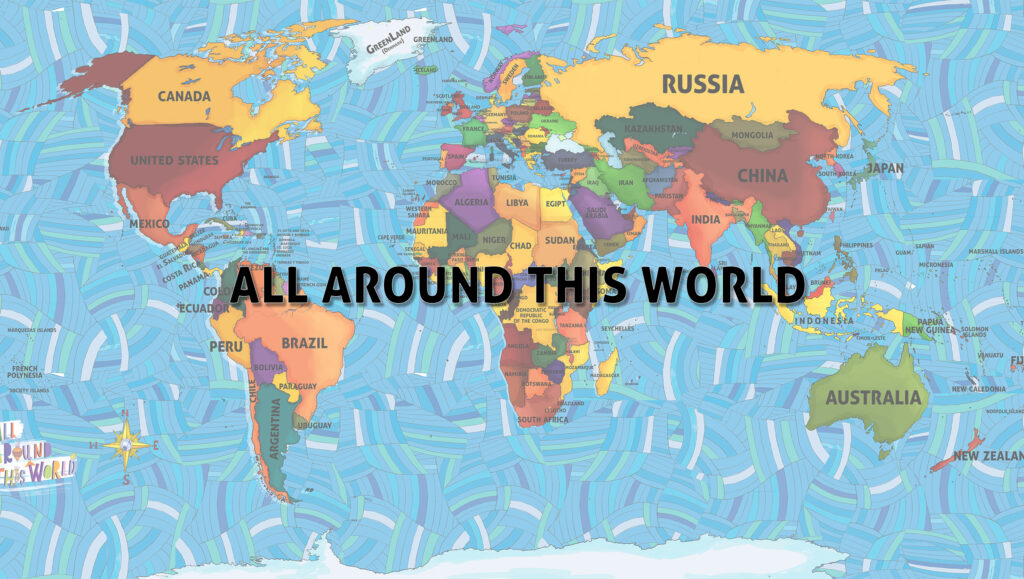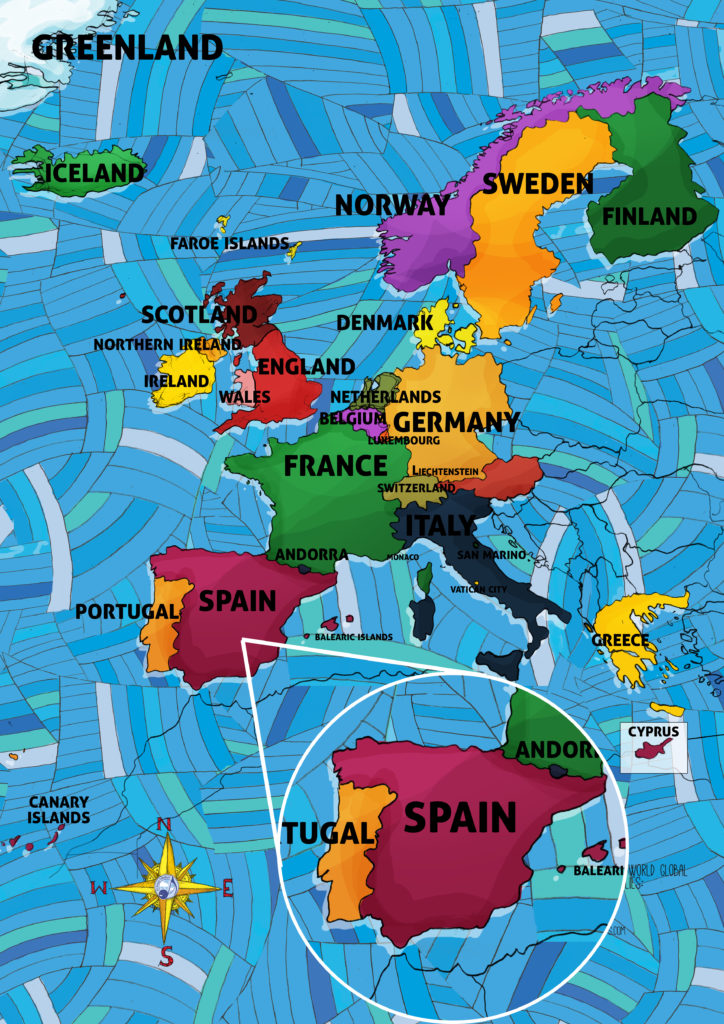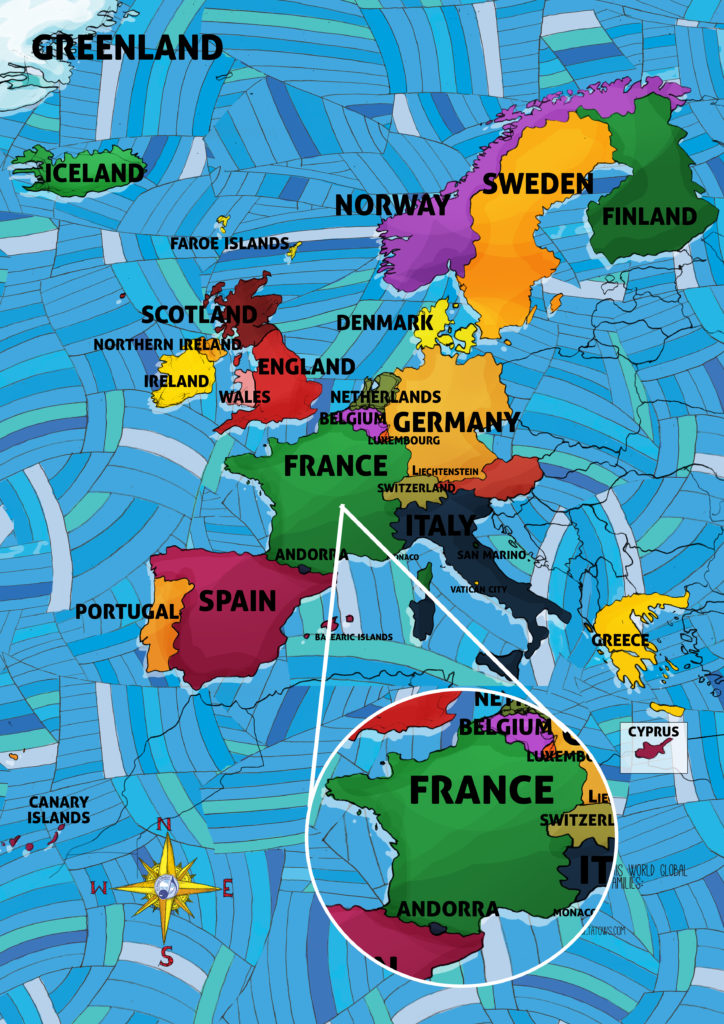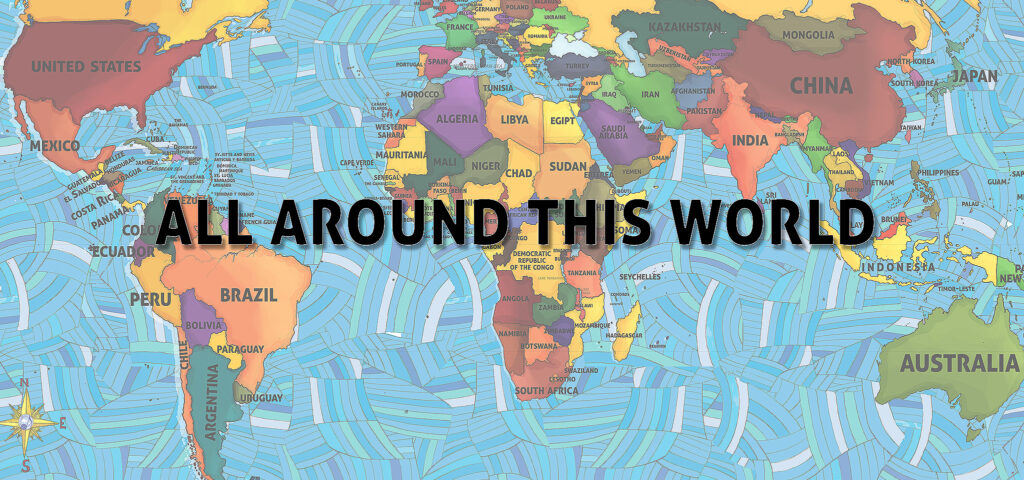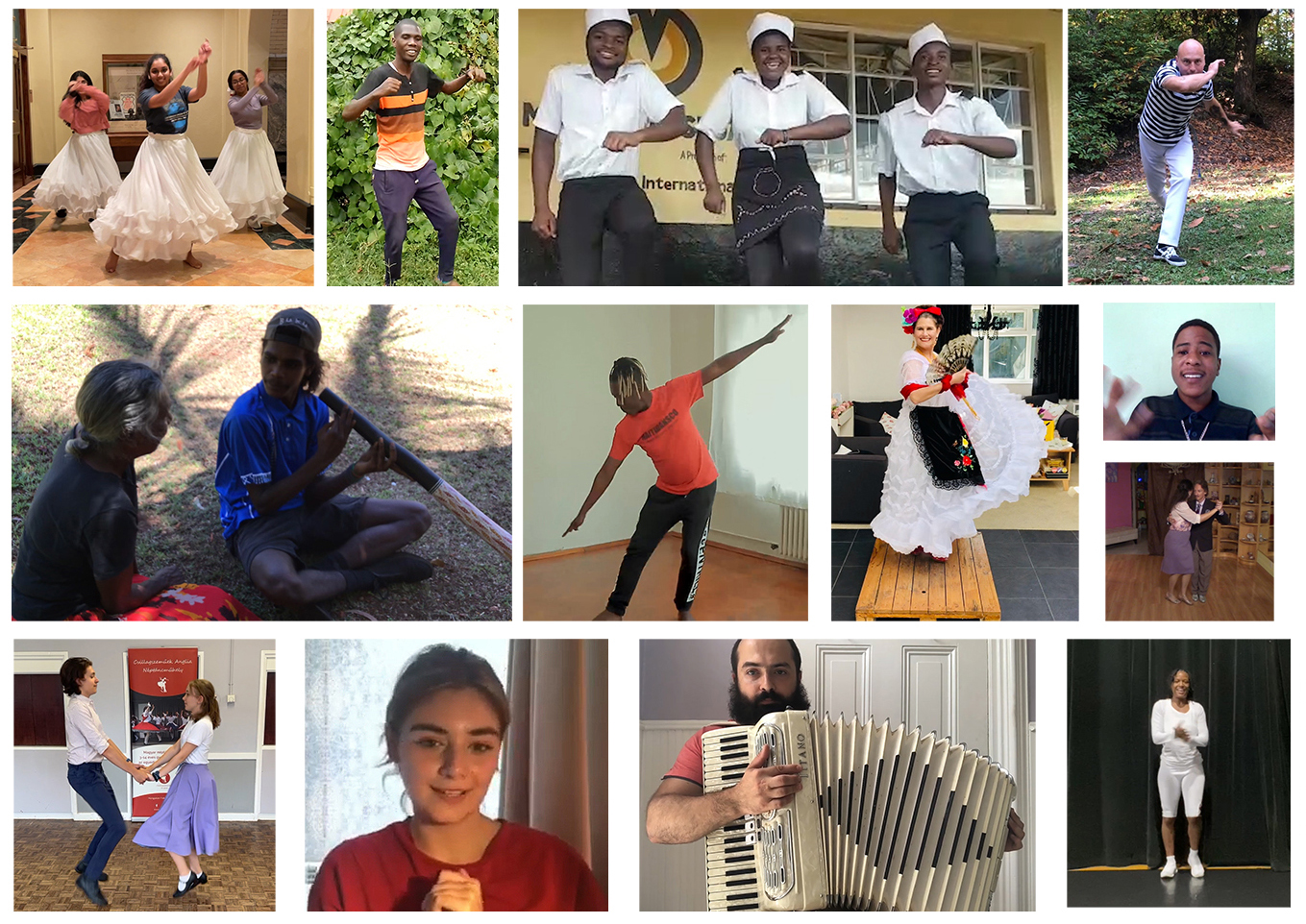
All Around This World is an interactive Diversity, Equity and Inclusion program for children 0-9 years old that encourages kids and their families to explore the world by enjoying global music, rhythms and movement. Jay Sand, guitarist and children’s music teacher, world traveler and dad of three girls developed All Around This World with his girls as a way to introduce them to the countries he’s already visited and the many more he plans to visit with them. Through dynamic online classes, CDs, concerts and workshops, engaging homeschool and classroom lessons, “musical maps” and participatory parent-child music-making Jay, and All Around This World’s expanding community of “culture-bearers,” hope to make the world a bit smaller one song at a time.
* Nice note: All of the pictures of culture-bearers in the image accompanying this post are screenshots from actual All Around This World teaching videos.
All Around This World is a sponsored project of Fractured Atlas, a non-profit arts service organization. Contributions for the charitable purposes of All Around This World must be made payable to “Fractured Atlas” only and are tax-deductible to the extent permitted by law. Donate here.
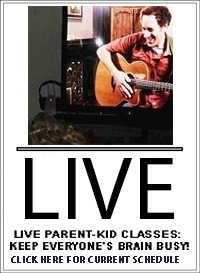


The All Around This World Culture-Bearer Project
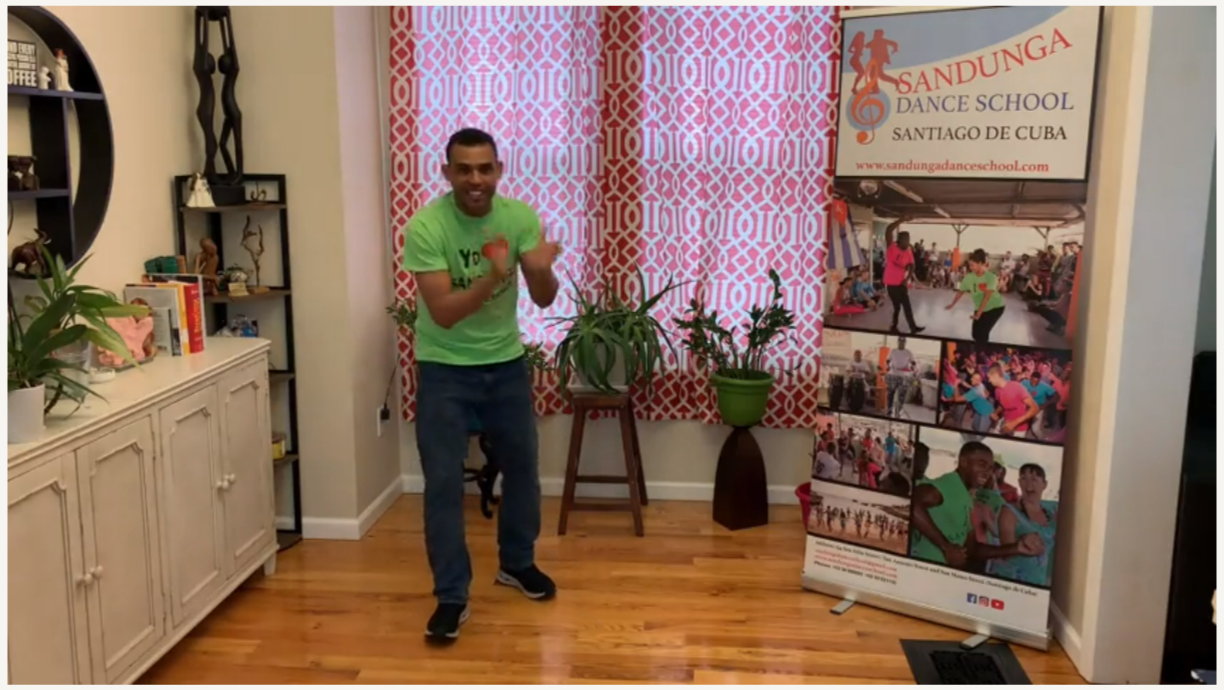
An enthusiastic update about the All Around This World “Culture-bearer project,” a passionately ambitious project to replace me (Jay) as the primary teacher of international songs, dances and cultural experiences in all All Around This World recorded lesson videos with inspirational “CULTURE-BEARERS” — educators who have a direct ancestral and/or other profound connection to the lesson at hand.
I love being a teacher who you and your kids trust to introduce you both to songs and dances from over 100 countries. I appreciate that my role is to lead my students in a joint exploration of All Around This World’s global songs, dances and celebrations, as we learn about the cultural experiences with open hearts, but from the “outside.”
Over the course of the ’22 – ’23 school year All Around This World has been working more and more global culture-bearers to create videos introducing all of All Around This World’s cultural experience lessons straight from the heart. YAY!
Watch this space in the spring of 2023 for debuts of videos — like the one pictured in this post, of Rafael of the Sandunga Dance School from Cuba, teaching the cha cha cha — that introduce songs, dances and holiday celebrations that originate from countries such as:
Argentina (Marcelo teaches tango), Bulgaria (Tedy teaches Bulgarian rhythms), Chile (Orietta teaches the Cueca), Cuba (Sandunga teaches the cha cha cha), Georgia (Ivlita and Tatlui teach about Supras), Ghana (Moses teaches Kpanlogo), Haiti (Dieufel teaches Rara), Hungary (Krisztina teaches Hungarian dance), Malawi (Chisomo and friends teach the Malipenga), Mexico (Magaly teaches Son Jarocho dancing), Moldova (Stas teaches about accordions), the Philippines (Esther teaches tinikling), Romania (Mihail teaches Romanian dance), Trinidad (Mark teaches Exetmpo)…and many more.
If you are an educator who would like to share elements of your culture with my young students, be in touch.
The Kalamatianos — a twelve-step program
This week in class we dance a simplified version of the Greek Kalamatianos, one of the ancient nation’s most widely known dances. The reason we’re doing a simplified version, other than the fact that kids in our classes are often toddlers and they do a simplified version o every dance, is that the Kalimatianos is tricky. The dance has 12 steps – 10 counterclockwise (“forward”) and two clockwise (“backward”), and the 12 steps interact with a rhythm that has 7 beats, which come in three groups – 3 + 2 + 2. Whatever the footwork, when we dance we can all sing along with one of the most famous kalamatianos songs, “Milo Mou Kokkino” counting as we go: “Slow, quick quick, slow, quick quick” or “Long, short short, Long short short.”
Vasilias Tsitsanis, Rebetiko Royalty
In the 1920s and 1930s a new form of music became popular among the Greek “underclass.” This music, known as rebetiko (also written as “rembetiko”), marked an essential step in the newly “exchanged” Greek population’s assertion of its national identity. Rebetiko composers and performers applied Western instruments to Turkish modes and melodies, transforming the Turkish makamat (modes) into similar Greek “dromoi” (or, “routes”). The most prolific and influential rebetiko composer was Vassilis Tsitsanis, who composed for almost every popular rebetiko vocalist and also played bouzouki and performed many of his own 500 or so songs. Watch Tsitsanis himself perform live in the ’70s (the music starts at 1:05).
¡Toma que toma!
¡Paco de Lucia!
We can’t help but start our tour of music from Spain with the primary Andalusian musical genre, and the closest Spain comes to having a “national” music — flamenco! Flamenco developed from the multilingual, multicultural mix of Arabs, Jews, Christians and Gitanos present in Andalusia in the centuries after the 1492 Spanish “reconquest” of the Iberian Peninsula. Though the genre may have risen from the Andalusian streets by the 18th century it was well within the realm of professionals, with flamenco guitarists and dancers expected to pursue a rigorous course of study to develop their craft. Even so, flamenco music still moves performers and listeners most when it oozes emotion. Flamenco is not truly flamenco unless there are at least three elements present–cante (voice), baile (dance) and toque (playing guitar). In this video we enjoy master Flamenco guitarist Paco de Lucia toque-ing his heart out.
In Spain we are all bailaores
¡Hola amigos! From the very earliest days of documented Spanish music-making, Iberian music has fused different rhythms, melodies, customs and cultures. The Ancient Greeks, the Romans, Christians and Moorish Muslims, roaming Romani and all sorts of refugee Jews…there were always people with varied interests and musical abilities passing through Spain, and they always had a tale to tell. The folk music of Spain varies from region to region, from community to community, probably even from neighborhood to neighborhood. For example, the music of Galica, ruled by Celts for centuries, still retains a Celtic character. Music from Basque Country has a distinct sound due to the unique instruments used in creating it. Castalonia, in the far northeast, encompasses the dynamic city of Barcelona and is home to the “Catalan rumba,” a genre that developed in the 1950s in Barcelona’s Romani communities. The primary Andalusian musical genre, and the closest Spain comes to having a “national” music, is Flamenco. This week in on our online class we will dance like true flamenco bailaores. And we will be fantastic.
If Zaz was busking you would definitely give her a franc
Zaz is a modern French singer who you simply must know….
“Chanson” literally means “song,” but when used to refer to the genre of French vocal song and singers, the term broadly cover French musicians from epic Old French “chanson de geste” to 12th and 13th century lyric poems known as “grand chant,” to Burgundian chansons of the 14th and 15th centuries, to 15th and 16th century Parisian chansons, all the way through French chansons of today. Since the early 20th century the term “chanson” has broadened to encompass almost all vocal music from France, from playful music hall vaudeville of the kind Maurice Chevalier sang and which thrived in Paris between World Wars I and II through modern French “chanteuses” (female chanson singers) of the ’60s and ’70s like the Egyptian-Italian born, French-raised Dalida, all the way up to modern French-language singers like Carla Bruni. All Around This World loves current French chanteuse is Isabelle Geffroy, who is known by her nickname, ZAZ. We know you’ll enjoy this video of her busking with her hit “Je veux.”
Three-Fingered Lightening
Belgian guitarist Django Reinhardt put France on the global map of jazz.
In the mid-1920s Paris was a global hub of jazz. African-American jazz performers like vocalist Josephine Baker and trombonist and bandleader Sidney Bichet took residence there and inspired generations of French musicians to look across the Atlantic for their music, all the way to the jazz clubs of New York or New Orleans. Among those inspired were Belgian “Gypsy” guitarist Django Reinhardt and French violinist Stephane Grapelli. In 1934 they joined with other accomplished musicians in the “Quintette du Hot Club de France,” a combo that pioneered an exuberant and distinctly jazz from France known as manouche (“gypsy swing.”) As you may be able to see in this video, Reinhardt only had full use of three fingers on his left hand, the fourth and fifth having been damaged in a fire, hence the nickname “Three-Fingered Lightening.”
France’s ancient organum
One of the earliest documented forms of music in Europe is the French organum, a Gregorian chant that features a base and a second voice that sings the same melody parallel to the first at a constant interval.
The French organum comes from the Middle Ages (the 5th century to the 15th century), as do early troubadour songs written in the southern French language of Occitan, trouvère songs–similar to troubadour songs but from northern France and written in French, and a kind of song called the motet, a harmonious chant-based form that which broke new cultural ground by blending the sacred and the secular. Watch the example in this video, and enjoy!
Tres bien, merci, ev vous?
This week in our online class we land firmly and festively in France. This week we will love French music! In our several Francophone songs in class we travel back in time to fall in Ars Nova love, sing a shanty about the drudgery of sawing, and overthrow the King by quacking like a Parisian duck. And, to top it all off, we start a revolution by storming the Bastille. Into all that and more…? Let’s go!

